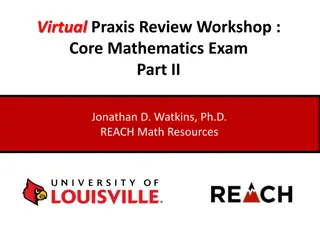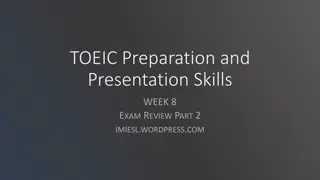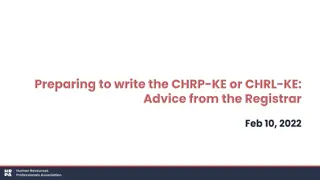Exam 1 Review and Study Tips for Success
Prepare for your Exam 1 effectively with 50 questions to be completed in 1 hour and 20 minutes. Follow study points on UBLearns, review lecture material, textbook chapters, and notes. Enhance your studying with study tips, test strategies, in-class activities, and insights into science and systems. Take your time, focus, and ace your exam!
Download Presentation

Please find below an Image/Link to download the presentation.
The content on the website is provided AS IS for your information and personal use only. It may not be sold, licensed, or shared on other websites without obtaining consent from the author.If you encounter any issues during the download, it is possible that the publisher has removed the file from their server.
You are allowed to download the files provided on this website for personal or commercial use, subject to the condition that they are used lawfully. All files are the property of their respective owners.
The content on the website is provided AS IS for your information and personal use only. It may not be sold, licensed, or shared on other websites without obtaining consent from the author.
E N D
Presentation Transcript
Exam 1 50 questions 1 hour and 20 minutes to complete exam Multiple choice Lecture slides and notes
What material to study? Follow the study points posted on UBLearns Lecture Material Textbook chapters if you have any question on the lecture material Your own notes
Study Tips Go through the study points and lecture slides Read the chapters actively if you do not fully understand the lecture slides or notes Find a study buddy Use flash cards Email me if you still have questions
Test strategies Usually, 1 or 2 answers that are totally incorrect, and then 1 that might sound like it is correct but is not. Studying thoroughly allows you to distinguish between the answer that looks correct and the answer that is correct. Because of the above TAKE YOUR TIME! Don t rush through it, because you may get tripped up by those answers that look correct but are not. ALWAYS put an answer. 25% chance you will get it right by guessing.
In-class activity Imagine you are the professor, post a multiple-choice question. This trains you to anticipate the types of questions, so you can focus on what to study Gets you into that type of thinking
An introduction to science Global climate change Environmental change Properties of scientific models The best scientific model Useful scientific model The steps of a scientific study
An introduction to systems System Atmosphere, hydrosphere, lithosphere, biosphere Component Coupled system System diagram Negative coupling Positive feedback system Negative feedback system Equilibrium Stable equilibrium state Unstable equilibrium state
Global energy balance Photon Energy from a particle perspective The relationship between wavelength and frequency Planck function Energy flux The energy emitted by Earth compared with that by Sun Albedo Albedo for some surfaces Incoming solar radiation (insolation) Net radiation
Energy balance and the greenhouse effect Movement of heat (energy transfer) Urban heat island Troposphere Stratosphere The mechanism by which greenhouse gas molecules absorb energy The radiation greenhouse gases absorb, and the radiation greenhouse gases emit Greenhouse gases Clouds and energy Earth s energy balance Greenhouse effect
Atmospheric and Oceanic Circulation Coriolis force Wind patterns generated by the air pressure zones Westerly winds The Earth s Ocean Ocean surface currents Vertical structures of ocean temperature, salinity, and density

























